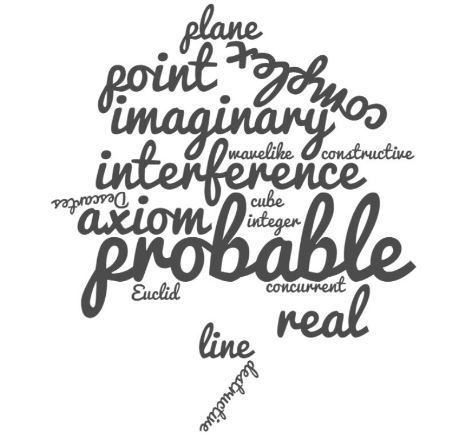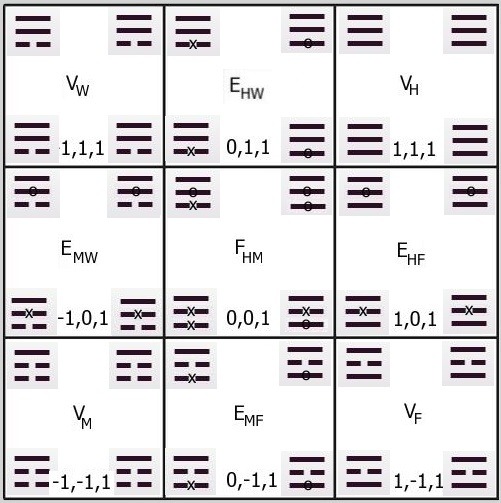#mandala

one of my abstract flash designs!

A little bit of more progress and the lighter shades just make it so lovely!!

Starting with a new combination of colours for Mandala. I have been staring at both the blues and still can’t make up my mind… Which blue should I go with? The very lighter one (bottom one) or the slightly darker one (top one)..

You are beautiful just the way you are!! ✨

I love this two-toned floral mandala embroidery in red & yellow. If you had to choose a different thread combination, what colours would you pick for this piece? ❤️
Flying back to #cdmx to only get ink from @indigo.tatuaje for the rest of my years. Finishing the sleeve. PS - the swelling went down.
#Repost @indigo.tatuaje
・・・
Ésta manita con adornos mandalescos se va hasta Los Angeles, California para @franceasca !!
Gracias por la visita y la confianza !!
indigo #indigotattoo #viejosdiablos #primetime #primetimecdmx #ladelvalle #tatuaje #tattoo #tattoolife #ink #inked #tatuadoresmexicanos #inkstagram #picoftheday #mexicanoschingandolecabron #mchcfamiliaoficial #tttism #tinta #mchc
#instatattoo #tattoosofinstagram #skinart #mandala #handtattoo #hindu (at PrimeTime Tattoo)
https://www.instagram.com/p/CRyLmM3rlGv/?utm_medium=tumblr
Post link
IF YOU’RE IN MEXICO CITY BEST YOU FIND @primetime_tattoocdmx & ASK FOR @indigo.tatuaje ONE OF THE BEST ARTISTS IN MY 36 YEARS OF GETTING TATTOED. #newyork #mandala #mandalatattoo #mandalahandtattoo #roses #rosetattoo #tattoosleeve (beginning ) #bloodistheroseofmysteriousunion #thedoors #tattoo #mexicocity #cdmx #chickswithtattoos #newink #quilltattoo @gangstina (at PrimeTime Tattoo)
https://www.instagram.com/p/CRRgJXIL7Ll/?utm_medium=tumblr
Post link
2018.03.10 Oscar
My neighbor has been kind enough to look after my dog a few days a week, and I don’t know quite how to thank her, so I made a portrait set of her dog, Oscar, and mandalas (because she loves mandalas). I don’t really have money so this is the next best thing. Hope she likes it.
Post link

Knockin on heaven’s door – 22in x 28in

another new near symmetry - cave painted wood carved mandala
24in x 20in
Her grandmothers silhouette with a mandala inside it. Here at @fullcirclespeakeasy @fullcircletattoo #darkartists #blackworkers #blackworkerssubmission #blackwork #ttt #tttism #lovettt (at Full Circle Speakeasy)
Cool idea!
Post link
Magic Theatre: For Madmen Only

If we describe a Cartesian ordered triad by x,y,z we can describe an analogous 6-dimensional ordered sextuplet or 6-tuple by xa,ya,za,xb,yb,zb
The definitions that translate a 6-dimensional ordered sextuplet (hexagram in Taoist terminology) into a 3-dimensional ordered triad (trigram in Taoist terminology) are:[1]
- (xa + xb) / 2 = x
- (ya + yb) / 2 = y
- (za + zb) / 2 = z
I think the methodology will work for all scalar quantities. But as currently formulated, mandalic geometry (MG) is a discrete geometry based entirely on unit vectors. We are talking about the line segments between -1 and +1 in the various dimensions and only points -1, 0, and +1 in each line segment in Cartesian terms.
In essence we are not yet particularly concerned with scalars here but only with vectors : -, +, and neutral (0).
Mathematically √−1 is important because by adding it to the real number field, as we have done, we create the algebraically complete field of complex numbers. In mathematics, a complete field is a field equipped with a metric and complete with respect to that metric. The real numbers and complex numbers are both complete fields. Cartesian coordinates- - - ordered pairs and ordered triads- - - although based on real numbers, do not form a field. This has important implications, implications which can be ignored only at peril to the particular conceptual system involved..
The definitions above all give three possible results in Cartesian terms: -1, 0, +1. Remember though MG hybridizes six dimensions with three dimensions and represents them superimposed. Wherever one or more zeros occurs in Cartesian coordinates we have also corresponding 6-dimensional forms, composed of just +1s and -1s, of which there are always two for each Cartesian zero. A Cartesian ordered triad with one zero is associated with two such 6-dimensional forms; an ordered triad with two zeros, with four; an ordered triad with three zeros (the origin), with eight. An ordered triad without zeros will have only one associated 6-dimensional form. This constitutes the mandalic pattern, which is an essential feature of the 6D/3D formulation of this geometric system and isomorphism naturally comes into play here as well.
Andthat is how and why all numbers in this coordinate system based on higher-dimensional extensions of the real numbers “square” to numbers which can be either positive or negative and then reduce or "collapse" to corresponding Cartesian forms that preserve the same sign. This is a necessary result of the fact that a primary “zero form” in
6-dimensional terms is lacking, only +1s and -1s exist. These can then interfere constructively and destructively as number waves, to produce a "secondary zero" by destructive interference whenever linked forms differ in sign in one or more paired dimensions. Since the two linked 6-dimensional numbers are always inverse to one another, any Cartesian zero then can be substituted with two such 6-dimensional forms. This is the process that makes imaginary numbers unnecessary, replacing them with two inversely related probable numbers which behave in most ways like real numbers and are distributed throughout the entire geometric system.
“Hybridization” is probably not the best term here but will be used until I can think of a better descriptor. What I intend is not actual joining and unification, but rather a superposition and conceptual commingling in three-dimensional terms. Such a representational mapping substitutes for all Cartesian forms "equivalent" forms containing only 1s and -1s, no zeros. In so doing, it effectively converts the Cartesian coordinate system from just a ring to a field as well, properly interpreted. Basically then, the probable numbers do for the real numbers much the same as the complex numbers do, but with even greater and more utilitarian results which are also more easily managed.
In operational terms, complex numbers perform two rather simple binary operations: a scaling and a rotation. Scaling capability is clearly inherited through its real number lineage; rotational capacity, from its imaginary number lineage. Together, scaling and rotation combine to augment or diminish an axis of growth and produce vector ambulation in a circular path about a central origin point of reference. The scaling factor could be said to detemine the radius of revolution; the rotation factor, the angle of revolution. And that’s pretty much all there is to the “great mystery” of complex numbers. Their importance resides in the great number of fields of endeavor where the combination of these two superpowers is necessary and/or convenient.
Nature uses this combination of scaling and rotation in many of its processes. Atomic and subatomic proceedings are probably not among these. How then did it come about that quantum mechanics arrived at the notion that rotation and scaling could be applicable to modeling of discontinuos states of being? Both refer to changes through continuous space. I think it was an accident of history. In 1925, Erwin Schrödinger, in his search for a way to explain certain mysteries then perplexing the greatest physicists of the day, hit upon his eponymous equation which appeared to do the trick. So well, in fact, that quantum mechanics has been justly considered the single most successful description of reality ever devised. And the equation that basically accomplished this success involves the imaginary number i and complex numbers.[2]
An important aspect of the operation of rotation, one which may have bearing on the Schrödinger equation and its huge success, has been largely overlooked. The result of a rotation can often mimic the result of inversion (reflection through a point), making the two indistinguishable by measurement alone. To someone wearing a blindfold there is no way to tell whether i has by the operations of squaring and rotation changed itself into -1 or -1, the inversion element of multiplication, has simply reflected +1, the identity element of multiplication, through the origin point to -1. Explaining away a 90° rotation with a right angle reflection will no doubt prove more difficult but let’s not just yet deny that it might be doable.
Could there be a way to reformulate the Schrödinger equation then so it contains no imaginary or complex numbers? Many have tried to do that very thing and failed. No one has succeeded in nearly a century. Still, we might wonder if the time is ripe now to remove the blindfold. Perhaps we might do well to inquire whether quantum physics is, in some manner we don’t quite understand, a victim of its own success.
In theory, circumventing use of complex numbers in a defining equation of quantum mechanics should be possible. On what basis do I say this? The equation we have now relies on complex numbers. These in turn derive an ability to produce rotation from the imaginary number √−1 . But there are other mathematical means to accomplish the same. Trigonometry comes most immediately to mind. The circle and cyclicity it models have a very long and distinguished history. Complex numbers as we’ve noted can also produce scaling. But so can real numbers. And close examination reveals that complex numbers inherit their ability to scale from the two real numbers they contain. The hard truth ultimately is there is nothing all that special about complex numbers or complex plane. Possibly it is their utilitarian ease of use that positions them as an attractive methodology. Other routes to ease of use exist as well. There is always more than one way to skin the proverbial cat (even a cat residing only in the mind of a physicist named Schrödinger.)
Consider also, how great is the actual need for scaling in quantum mechanics? The distance from centermost part of the atom to the outer reaches of electron orbital space is in fact quite small. Furthermore, the elements of this universe of discourse are quantized, so actual distances involved are moot. In the extreme, the question persists as to whether “distance” is a concept even applicable in this context of quantum logic. Quantum numbers themselves range between 0 and 2. I can count the allowed values on the fingers of one hand.
Regarding rotation, where exactly does that come into play in the quantum realm? Electrons do not orbit the nucleus of the atom. They jump from orbital to orbital by discretized changes in energy involving photon exchange. In the nucleus it seems such discretized instanteous changes take place as well, obviating any need for rotation. Obviously physics misguided here by labeling one of the quantum numbers “spin”. Sometimes a rose is best referred to as a rose. The problem here is that we don’t really know what it is that “spin” refers to.
The quintessential equation of quantum mechanics was formulated by a physicist, not a mathematician. It is not a simple algebraic equation, but in general a linear partial differential equation, describing the time-evolution of the system’s wave function (“state function”). “Derivations” of the Schrödinger equation do generally demonstrate its mathematical plausibility for describing wave-particle duality. To date, however, there are no universally accepted derivations of Schrödinger’s equation from appropriate axioms. Nor is there any general agreement as to what the equation actually signifies. Moreover, some authors have demonstrated that certain properties emerging from Schrödinger’s equation can even be deduced from symmetry principles alone. This would appear to be a worthwhile direction of investigation to pursue. Quantum mechanics is most fundamentally about symmetry. Let’s make Emmy Noether proud by giving her the recognition she deserves.
Finally, it was not without considerabledifficulty that Schrödinger developed his equation. In the end, it almost seems he pulled it out of a hat, as a magician might a rabbit.[3] Part of the Zeitgeist of the physics community in the early 1920s revolved around the peculiar notion that particles behaved as waves. Schrödinger decided to follow this direction of thought and find an appropriate 3-dimensional wave equation for the electron. His equation succeeded beyond his wildest dreams. Adopted in the canon of the new physics, it became the cornerstone of that radically different physics, changed forever. Physics has never looked back since.
Still, one startling and haunting fact persists: nowhere else in all of physics has it ever been found necessary to invoke complex numbers.
Once, quite a long time ago, I believed imaginary numbers were wrong. I was the one that was wrong. Later, having grown a little more clever, I came to think that √−1 was a necessary evil- - -correct but not validly applicable to quantum physics. Wrong again. Currently it is my belief that imaginary numbers are guilty of an even worse offense: both true from the mathematical standpoint and partly applicable to physics. The worst of both worlds. Yielding results that are in large part correct, imaginary and complex numbers have managed to lead us all down the garden path for the better part of a century. Have we then gone past the point of no return? My contention is that it is possible to complete the ring that Cartesian coordinates present and transform it to a field over the real numbers, with appeal only to higher-dimensional analogues of the reals and no need for imaginary or complex numbers, an approach which, if actually possible, would offer certain undeniable advantages.[4]
Essentially the method of composite dimension does away with i and complex numbers by distributing an operation analogous to that of i throughout six dimensions or three in Cartesian terms and then working with same by means of reflections (inversions) only. So an algebra based on the system necessitates use of only the real numbers and their higher dimension extensions that I have called probable numbers. Only simple addition and multiplication are required. For those in the audience who are "sufficiently mad”, there is the added bonus that a kind of division by zero becomes possible. We’ll find out soon enough whether you qualify.
A few additional explanatory remarks are in order here:
Depending on the variant, Cartesian geometry (CG), represents space in two or three dimensions. Points in the former are referenced to two pairwise perpendicular axes; in the latter, to three.
Because Descartes assumes as axiomatic a 1:1 correspondence of number to spatial location each of his three axes becomes a facsimile of the number line, only in different dimensions.
Mandalic geometry (MG) approaches representation of space differently, using a hybrid coordinate system which relates a higher dimension space to a lower dimension space with a 2:1 correlation.
Itcan be represented entirely commensurate with CG, but in so doing a “glass slipper effect” occurs. Just as Cinderella’s stepsisters can manage to force a too fat foot into her glass slipper, the results leave something to be desired. In our context here, the "something to be desired" is a clear and full understanding of six-dimensional reality in its own right. We end up interpreting it in time-sharing terms of probabilities and randomness.
What Descartes refers to as an ordered pair requires two higher dimension ordered pairs to represent in MG; a Cartesian ordered triad requires three higher dimension ordered pairs to represent in MG.
In Taoist terminology the notational equivalent of a Cartesian ordered pair is a "bigram", a two-line symbol, each line of which can take one of two values. As a result there are four types of bigram. Two bigrams make up a tetragram; three, a hexagram.
Descartes views a point as having only two essential characteristics:
- It is dimensionless.
- It is just a location in space which can be uniquely represented
by a single ordered pairorordered triad.
Mandalic geometry rejects both of these axioms. It regards a point, or a particle so represented, as an evanescent entity emerging from interaction of two higher dimensions expressed in our world of three dimensions in such limited manner.
Thiscan be represented in context of Cartesian space but in making mandalic coordinates commensurate with Cartesian coordinates it is no longer possible to represent every “point” in space uniquely with a single mapping of number to location. What results instead is the probabilistic distribution pattern of the mandala, which we, from our limited vantage in spacetime, misinterpret as something it is not.
MG is a discrete geometry. The result of the mapping formula used is a mandalic configuration in which the 3-dimensional cube composed of unit vectors in Cartesian space becomes a "probability distribution" in combined mandalic space.
I have placed the quotation marksaroundprobability distribution because this is a perspective that arises from our inability to see all that is involved accurately. I suspect this has repercussions pertinent to a full comprehension or grokking of quantum mechanics and possibly of string theory as well.
Since the 64 discrete “points” of the unit vector hypercube of six dimensions represented by the hexagrams cannot “fit” simultaneously in the 27 discrete points of the 3-dimensional unit vector cube by any representational method available to our inherited bio-psychocultural mechanism, a sort of time-sharing process occurs in observations and measurements of reality which we interpret in terms of probability.
What has been described here occurs at enormous velocities close to that of light, and likely refers only to processes in the subatomic quantum realm. For MG, which is also a hybridization of mathematics and physics, context is always of the essence.
There is much more to be said in explanation of mandalic geometry. I see, though, this post has already run rather long, so we will end it here. Enough has already been said in way of introduction of basic material.
Notes
[1] Since the coordinate system is describing a cube with an n-hypercube superimposed, there is an additional constraint placed on all coordinates in
the 6-tuples. All scalar values must be identical for x, y and z values. That constraint assures that all vectors though they may differ in sign (direction) maintain equal magnitudes.
When the 6-tuples are dimensionally reduced to 3-tuples by the method I’ve called “compositing of dimension” the resulting geometric figure consists of four different dimensional amplitudes of 6-tuples collapsed. The amplitudes of dimension correspond in spatial terms to the vertices, edge centers, face centers and cube center. The pattern that emerges is that of a mandala. This is a highly symmetric pattern though all symmetries aren’t necessarily apparent immediately, even using Taoist notation. The probability distribution of the 6-tuples allots the hexagrams in the following manner: one to each vertex; two to each edge center; four to each face center; one to the cube center. The result is placement of 64 6-tuples in 27 positions of discrete 3-tuples in the specific mandalic distribution pattern described.
Think here of the analogy of a hydrogen atom confined within a cubic space of specified side length determined by the nuclear and atomic force fields. The single electron, existing in such quantized energy levels that are possible, can assume various different locations in different orbital shells, but every location in a given orbital must be equidistant from the nuclear proton. Once reduced by dimensional compositing the 6-tuples described here fill four distinct shells that have different radii or distances from the center. From center to periphery these distances can be described as zero; one (or square root one); square root 2; and square root 3. (Pythagorean theorem)
[2] Schrödinger was not entirely comfortable with the implications of quantum theory. About the probability interpretation of quantum mechanics that came out of Solvay ‘27 he wrote: "I don’t like it, and I’m sorry I ever had anything to do with it.“ ["A Quantum Sampler”. The New York Times. 26 December 2005.]
[3] In later years another great physicist, Richard Feynman, would remark, “Where did we get that (equation) from? Nowhere. It is not possible to derive it from anything you know. It came out of the mind of Schrödinger.”
[4] A different approach to avoiding the need for complex numbers from the one I am suggesting is described here. To my mind it offers little of value other than an interesting alternative explanation of what complex numbers are and do. A similar conclusion seems to have been reached by the author.
© 2016 Martin Hauser
Please note: The content and/or format of this post may not be in finalized form. Reblog as a TEXT post will contain this caveat alerting readers to refer to the current version in the source blog. A LINK post will itself do the same. :)
Scroll to bottom for links to Previous / Next pages (if existent). This blog builds on what came before so the best way to follow it is chronologically. Tumblr doesn’t make that easy to do. Since the most recent page is reckoned as Page 1 the number of the actual Page 1 continually changes as new posts are added. To determine the number currently needed to locate Page 1 go to the most recent post which is here. The current total number of pages in the blog will be found at the bottom. The true Page 1 can be reached by changing the web address mandalicgeometry.tumblr.com to mandalicgeometry.tumblr.com/page/x, exchanging my current page number for x and entering. To find a different true page(p) subtract p from x+1 to get the number(n) to use. Place n in the URL instead of x (mandalicgeometry.tumblr.com/page/n) where
n = x + 1 - p. :)
-Page 313-
A Recap of Some Important Ideas Regarding Mandalic Geometry

- Mandalic geometry (MG) is a new kind of mathematical methodology based on a worldview having roots that predate written history.
- It is a discrete geometry which currently consists of just a coordinate system but can be extended as Descartes did his to encompass an entire analytic geometry.
- Mandalic geometry introduces and is based on a new number system, the probable number system (or probabilistic number system.)
- Just as the complex number system combines real numbers and imaginary numbers and is more robust than either, the probable number system combines real numbers and probable numbers and is more robust than either.
- The probable number system is also more robust than the complex number system. Complex numbers combine real numbers with imaginary numbers to form the single complex plane. Composite numbers combine real numbers with probable numbers to form six interdependent composite planes.
- Axiomatic to the system is the contention that numbers can exist in different dimensions and therefore can be described as being of some particular dimension. Numbers are always viewed and treated within context of a stated dimension.
- Probable numbers are an extension of the real numbers to higher dimensions and are independent of imaginary and complex numbers.
- Mandalic geometry does not admit the existence of square root of -1 in the real world other than in mathematics invented by the human mind. In place of square root of negative numbers, MG introduces the new concept of contra-square root. In brief this involves substitution of a combination form of interactive two-dimensional analogues of +1 and -1 for -1 as currently used in imaginary number contexts. This is more fully explained elsewhere in the blog.
- Put another way, in place of imaginary numbers MG posits the existence of probable numbers. These can be considered the result of what is essentially wavelike interactions of higher dimensional numbers to form the real numbers we know in the 3-dimensional world.
- Higher dimensional numbers can interact with one another through wavelike constructive and destructive interference to generate ordinary
3-dimensional numbers. Numbers are not viewed as constants to be acted upon as Descartes so views them but rather as being themselves active and changeable. They participate in process. This feature alone enables composite numbers to mediate between mathematics and physics better than either real or complex numbers can. - The interactions of higher dimensional numbers in the process of dimensional compositing to yield 3-dimensional numbers is a function of time and therefore probabilistic from our limited ordinary point of view. From this perspective, certain probablity distributions are the result of dimensional compositing and the consequent mandalic form. MG considers the probabilistic nature of quantum mechanics likely to be based on such.
- The probabilistic nature in three dimensions of what are here called probable numbers is what gives rise to the mandalic form which can in a sense be considered the 3-dimensional evolution of 6-dimensional numbers from protean representations through progressive differentiation of form to the stage of maximal differentiation and back again to the undifferentiated state of greatest probability.
- The mandalic form has a geometric progression of its line structures in the three Euclidean/Cartesian dimensions such that series of numbers of the form 1:2:1, 2:4:2, and 4:8:4 occur throughout all of those dimensions when a hybrid 6D/3D coordinate system results from performing 2:1 compositing from six to three dimensions.
- Mandalic geometry views points and lines in three dimensions as convenient fictions that exist only as evanescent probabilistic concurrences of analogous entities in higher dimensions.
- The probabilistic nature of MG makes it ideal for investigations and descriptions of quantum mechanics.
- The exclusion of imaginary and complex numbers and substitution of probable and composite numbers which are easily reducible to ordinary algebraic/arithmetic forms and can be worked with using the same methods as those mathematical disciplines makes MG more utilitarian and appropriate to application to quantum mechanics than are complex numbers. All operations performed are based on simple inversion (reflection through a point) and on real numbers, maintaining all the usual rules and properties of ordinary arithmetic, including commutativity (which quaternions fail to preserve.)
- MG is currently based on discrete numbers and is concerned mainly with the positive and negative integers. Fractions and irrational numbers are not excluded from the system but do not currently play a significant role. Future incarnations of MG will extend it outward beyond the unit vector cube to tile the geometric universe and inward to encompass fractional entities and fractals.
- It is a hybrid geometry resulting from superposition of 6-dimensional numbers and 3-dimensional numbers and is fully commensurate with
3-dimensional Cartesian geometry. - It describes a linear mapping of two dimensions to one dimension which forms a field of probable numbers over the field of real numbers, analogous to the field of complex numbers but constructed on a different principle and extending to the real numbers in all three Cartesian dimensions rather than just one. The two independent higher dimensions so mapped become dependent variables in the mandalic “line” that results from the compositing of the two. This is expressed, in a sense, as two sine waves 180 degrees out of phase that mutually intersect a common Cartesian axis (x,y or z) at Cartesian +1 and -1 and are maximally separated at Cartesian 0.
- This phase difference produces wave interference of both constructive and destructive varieties. So-called “points” or “particles” they represent come into existence only discretely and intermittently at Cartesian -1, +1, and 0, the locations of intersection or confluence (-1 and +1) and maximum separation, the maxima/minima of the two entangled sine waves that occur at Cartesian 0.
- As the unit vector cube corresponds to and describes only half of each of the two sine waves, two unit vector cubes are required for a full cycle. Mandalic geometry as currently formulated with a single unit cube then needs to be extended to at least two of these. Extension in both directions of all three Cartesian axes is easily accomplished by repeatedly inverting the current single unit vector cube.
- This means that mandalic coordinates alternate positive and negative on both sides of Cartesian 0. The extensions can be continued to infinity in both directions, but not, properly speaking, positive and negative infinity since the manner of extension has created what is essentially a convention-free coordinate system which consists of repeated units of consecutively inverted unit vector cubes in which positive and negative alternate ad infinitum and every Cartesian even-numbered coordinate becomes a “zero equivalent” , or better, a neo-zero in this extended mandalic coordinate system.
- The resulting geometry is a dynamic one with “points”, “lines”, and “planes” coming into and passing out of existence intermittently in a time-sharing of corresponding Cartesian entities. It “persists” in time and space by means of continuous creation, destruction and re-creation and is “held together” by “force fields” produced and maintained by means of tensegrity which is based ultimately on dimension and number, and by a process that.might best be described as a “weaving of reality” with warp and woof.
- The 2:1 compositing of dimension involved creates a new number system the members of which are like the real integers in all ways except that they map differently to a Cartesian geometric space. Whereas Decartes assumes that one number maps to one point, MG does not make this assumption which is just an unproved axiom that Descartes makes implicit use of.
- The method of dimensional compositing automatically results in a mandalic formation having a geometric progression through three Euclidean/Cartesian dimensions from periphery to center (origin).
- Currently MG is limited to a description of unit vectors in a composite hybrid 6D/3D geometry but can be extended to include all scalar values and any even number of dimensions.
- The notation system used is borrowed from Taoism and foreign to most Western mathematicians. It is, however, basically equivalent to Cartesian coordinate signs (yin=minus; yang=plus); ordered pairs (=bigrams); and ordered triads (=trigrams); and extends these concepts to include ordered quads (=tetragrams) and ordered sextuplets (=hexagrams).
- This notation system is used rather than the usual Cartesian notation because it is much easier for the mind to manipulate dimensional numbers using it. It takes only a little practice to become accustomed to using it. Without its use, understanding of mandalic geometry becomes extremely difficult, if not impossible.
- As MG views a point as a concurrence of various different dimensions, it interprets Cartesian ordered pairs and triads, and their extensions to higher dimensions, as tensors and treats them as such. This makes it possible to apply operations of addition and multiplication to these mathematical entities in a manner analogous to the way William Rowan Hamilton applied these operations to complex numbers by way of what he called “algebraic couples”.
- The probabilistic mandalic form that is the hallmark of MG conveys and necessitates a new interpretation of zero(0). In MG “zero” is not the empty null that it is in Cartesian geometry and Western mathematics generally, but rather a fount of being, so to speak, and a logic gate spanning dimensions. Wherever a zero occurs in Cartesian coordinates two Cartesian-equivalent forms are found in mandalic coordinates. So in the mandalic cube based on unit vectors the twelve edge centers, having a single Cartesian zero, have two Cartesian-equivalent forms (hexagrams); the six face centers, having two Cartesian zeros, have four Cartesian-equivalent forms; and the single cube center, the Cartesian origin point with three zeros, has eight Cartesian-equivalent forms.
- Thisalternative zero and the mandalic structure it inhabits force the creation of four different amplitudes of dimension in the 6-dimensional unit vector cube. These are not independent but all mutually dependent and holo-interactive within the composite 6D/3D coordinate system. All of this occurs in a context reminiscent of the one inhabited by nuclear particles. The mapping proposed by MG may in fact model the elementary force fields, electromagnetism and quantum chromodynamics. It suggests a possible mechanism for formation of the state of matter known as a quark-gluon plasma. Hidden within it may even be the secret of quantum gravity.
© 2016 Martin Hauser
Please note: The content and/or format of this post may not be in finalized form. Reblog as a TEXT post will contain this caveat alerting readers to refer to the current version in the source blog. A LINK post will itself do the same. :)
Scroll to bottom for links to Previous / Next pages (if existent). This blog builds on what came before so the best way to follow it is chronologically. Tumblr doesn’t make that easy to do. Since the most recent page is reckoned as Page 1 the number of the actual Page 1 continually changes as new posts are added. To determine the number currently needed to locate Page 1 go to the most recent post which is here. The current total number of pages in the blog will be found at the bottom. The true Page 1 can be reached by changing the web address mandalicgeometry.tumblr.com to mandalicgeometry.tumblr.com/page/x, exchanging my current page number for x and entering. To find a different true page(p) subtract p from x+1 to get the number(n) to use. Place n in the URL instead of x (mandalicgeometry.tumblr.com/page/n) where
n = x + 1 - p. :)
-Page 312-
Beyond Taoism - Part 3
A Multidimensional Number System


(continued from here)
Descartes modeled his coordinate system on the Western number line, itself an extension of the decimal number system to include the new negative numbers, and upon the Euclidean notion of a three-dimensional geometry. All these events took place in historical times. In approaching the I Ching and its number system we are dealing mostly with events that took place before recorded history so it is impossible to say with certainty how anything involved came about. We can’t so much as be sure whether the I Ching was based on an antecedent number system, or predated and foreshadowed a subsequent number system of Chinese antiquity possibly contingent on it. We view all such things as through a glass, darkly.[1]
It is clear, though, that the number system of the I Ching is one far more complex than that of Western mathematics. The number system of the West is unidimensional (linear). Descartes, in his coordinate system, extends it for use in three dimensions. The number system of the I Ching, on the other hand, is in origin multidimensional. It is mandalic as well, which is to say it consists of multiple dimensions interwoven in a specific manner which can best be characterized as mandalic in form, possessing a number of interlaced and interlinked concentric shells or orbitals about a unifying center.
At the important origin of Descartes’ coordinate system is found his triple zero ordered triad (0,0,0). Descartes views this point,[2] asall his points, primarily in terms of location, not relationship. The matter of relationship is left to analytic geometry, the geometry Descartes codified based on his coordinate system.[3] The coordinate system itself seems not to care how points are formed or related beyond the most elementary and trivial operations of addition and subtraction throughout what essentially remain predominantly isolated dimensions.[4] In the end this becomes an effective and prodigious mind snare.[5]
In contrast to the Cartesian approach,theI Ching offers a unified coordinate system and geometry in a single entity which emphasizes the relationship of “points” and other “parts” (e.g., lines, faces) as much, if not more, than location, beginning with wholeness and ending with the same. In between, all sorts of complex and interesting interactions and changes take place. In analyzing these, it is best to begin at the origin of the coordinate system of the I Ching, the unceasing wellspring of being that supplants the triple vacuity of Descartes and Western mathematics.

Section FH(n)[6]
(continuedhere)
Notes
[1] My thinking is that the I Ching was originally primarily a non-numerical relationship system that subsequently was repurposed to include, as one of its more important contextual capacities, numerical relationships. That said, from a contemporary perspective, rooted in a comprehensive awareness that spans combinatorics, Boolean algebra, particle physics, and the elusive but alluring logic of quantum mechanics and the Standard Model, it would seem that this relationship system is an exemplary candidate for an altogether natural number system, one that a self-organizing reality could readily manage.
[2] As do most geometers who follow after Descartes.
[3] Strictly speaking, this approach is not in error, though it does seem a somniferous misdirection. Due to the specific focus and emphasis enfolded in Descartes’ system, certain essential aspects of mathematical and physical reality tend to be overlooked. These are important relational aspects, highly significant to particle physicists among others. These remarks are in no way intended to denigrate Cartesian coordinates and geometry, but to motivate physicists and all freethinkers to investigate further in their explorations of reality.
[4] The Cartesian system neglects, for instance, to express anywhere that the fact the algebra of the real numbers can be employed to yield results about the linear continuum of geometry relies on the Cantor–Dedekind axiom, which in mathematical logic
has been used to describe the thesis that the real numbers are order-isomorphic to the linear continuum of geometry. In other words, the axiom states that there is a one to one correspondence between real numbers and points on a line.
This axiom is the cornerstone of analytic geometry. The Cartesian coordinate system developed by René Descartes explicitly assumes this axiom by blending the distinct concepts of real number system with the geometric line or plane into a conceptual metaphor. This is sometimes referred to as the real number line blend. [Wikipedia]
Neither mandalic geometry nor the I Ching, upon which it is based, accept this axiom as true in circumstances other than those restrictive settings, such as Cartesian geometry, where it is explicitly demanded as axiomatic to the system. In other words, they do not recognize the described one to one correspondence between number and geometric space as something that reality is contingent on. The assumption contained in this axiom, however, has been with us so long that we tend to see it as a necessary part of nature. Use of the stated correspondence may indeed be expedient in everyday macro-circumstances but continued use in other situations, particularly to describe subatomic spatial relations, is illogical and counterproductive, to paraphrase a certain Vulcan science officer.
[5] For an interesting take on the grounding metaphors at the basis of the real number line and neurological conflation see The Importance of Deconstructing the Real Number Line. Also on my reading list regarding this subject matter is Where Mathematics Comes From:How the Embodied Mind Brings Mathematics into Being(1,2,3) by George Lakoff and Rafael Nuñez. Neither of the authors is a mathematician, but sometimes it is good to get an outside perspective on what is in the box.
[6] This is the closest frontal section to the viewer through the 3-dimensional cube using Taoist notation. See here for further explanation. Keep in mind this graph barely hints at the complexity of relationships found in the 6-dimensional hypercube which has in total 4096 distinct changing and unchanging hexagrams in contrast to the 16 changing and unchanging trigrams we see here. Simple by comparison though this model may be it will nevertheless serve us well as a key to deciphering the line derived from the mandala of I Ching hexagrams, and we will be referring back to this figure for that purpose in the near future.
© 2015 Martin Hauser
Please note: The content and/or format of this post may not be in finalized form. Reblog as a TEXT post will contain this caveat alerting readers to refer to the current version in the source blog. A LINK post will itself do the same. :)
Scroll to bottom for links to Previous / Next pages (if existent). This blog builds on what came before so the best way to follow it is chronologically. Tumblr doesn’t make that easy to do. Since the most recent page is reckoned as Page 1 the number of the actual Page 1 continually changes as new posts are added. To determine the number currently needed to locate Page 1 go to the most recent post which is here. The current total number of pages in the blog will be found at the bottom. The true Page 1 can be reached by changing the web address mandalicgeometry.tumblr.com to mandalicgeometry.tumblr.com/page/x, exchanging my current page number for x and entering. To find a different true page(p) subtract p from x+1 to get the number(n) to use. Place n in the URL instead of x (mandalicgeometry.tumblr.com/page/n) where
n = x + 1 - p. :)
-Page 298-
























